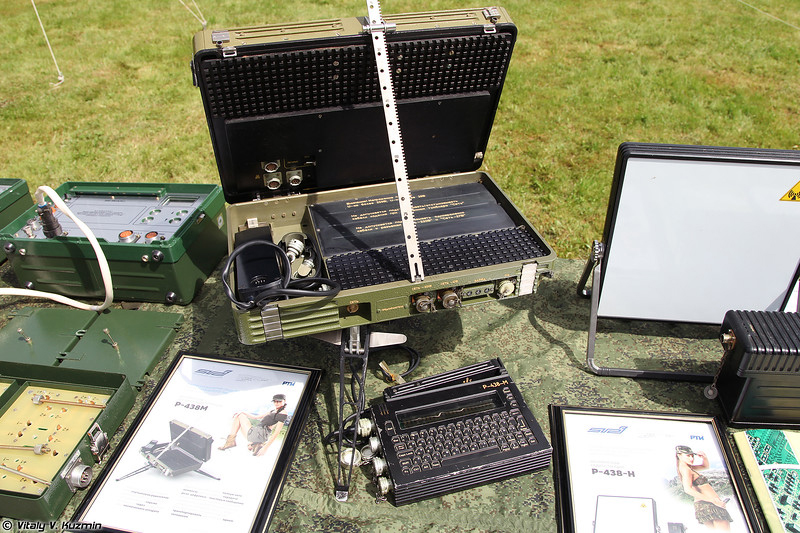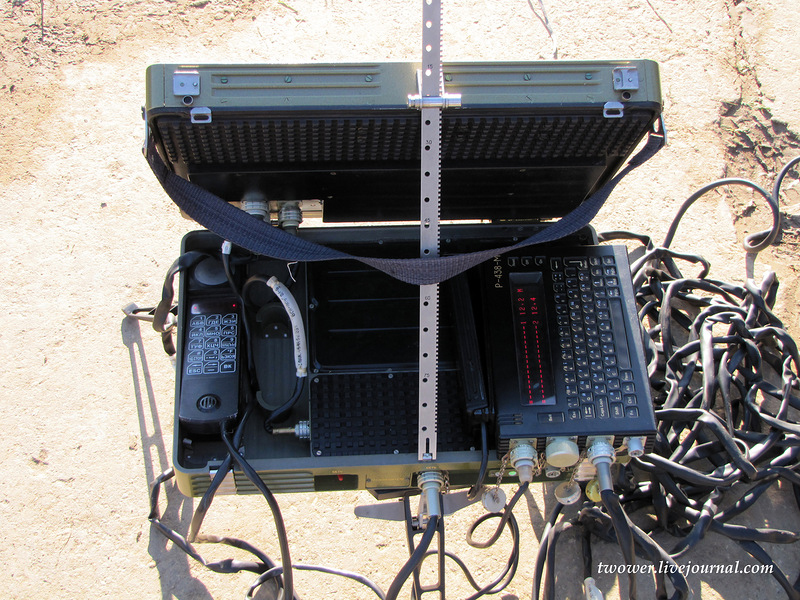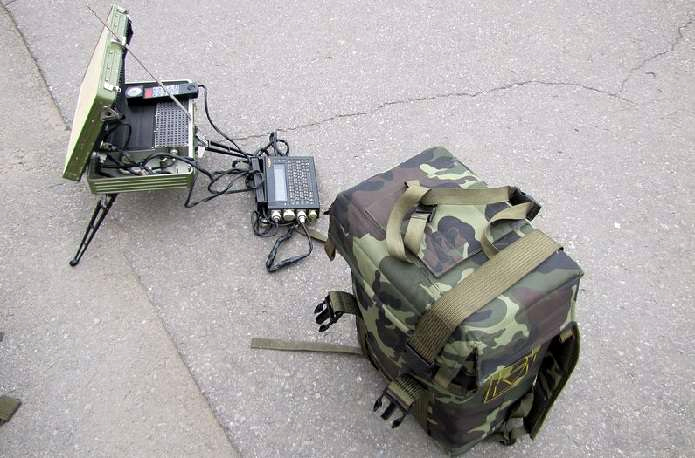The Russian troops in Syria were spotted with a R-438M Belozer Mobile Satellite Communication Station.
The station is designed to provide satellite radio communications for units operating detached from the main forces, as well as for use as a commander’s personal station.
It provides a full autonomy of operation transmitting voice, digital, and text messages, automated functional testing, and interface with a wide range of peripheral devices through ports RS-232C, C1-FL-BI. The radio station can be carried by one person.
Back in August 2019, the Russian Ministry of Defense tested the work of the “military Internet” – data transmission within the framework of an autonomous network over ultra-long lines using encryption. Data exchange with a speed of 300 Mbps was carried out between field control points at a distance of more than 2 thousand km.
Information was transmitted over a local wireless network, which allows the exchange of large files, including in audio and video format. During the exercises that took place in the Central Military District, the Mobile Satellite Communications Station R-438-N Belozer was used.
The Ministry of Defense claims that the communication channels are protected from hacking, and the transmitted data is encrypted.
The R-438M Belozer Russian Mobile Satellite Communication Station, compared to the stations of the previous generation, the data speed has increased by several times.
On the move, the station is the size of a school backpack and can be carried by one person; it weighs 16 kg. Set up time is about 30 sec. The station provides formalized service communication and a secure telephone mode.
The station operates in the range of 4 GHz to 6 GHz. Data transfer rate is 1200 bps.
The advantages of satellite communication are a large range of reliable signals, especially in areas with difficult terrain, regardless of the weather conditions and time of day and year, and a highly secure protection.
Yaroslavl Radio Manufacturing Plant started production of the portable satellite radio station R-438 Barrier-T in 1998-2000 and the R-438M Belozer in 2002-2003.
The R-438M Belozer was used, in 2019, in military exercises and competitions, notably in March.
More than 100 military personnel took part in the competitions and special equipment was involved, including R-166 radio stations, R-149AKKS command-and-staff vehicles, MK-ZVKS secure mobile communications complex, R441LM satellite communications station, R-438M Belozer mobile satellite radio station and radio relay station R-419 L1.
MORE ON THE TOPIC:









just make sure the AmeriCunts aren’t snooping and spying on those communications, otherwise they will give that info over to their jihadi terrorists inside Idlib and Al-Tanf
EDIT: beware of the Kike Nation to, they love spying on people since they can’t keep their giant goblin hook-noses out of people’s business
Which museum?
The one with a model of your brain showing retardation.
Its pocket seize, if You are an elephant having pockets. Western tecnology as well as chines can have it in a pocket and tranlate from russian by a loudspeaker too :)
Laika – Are You feeling hoot….
“The station operates in the range of 4 GHz to 6 GHz. Data transfer rate is 1200 bps.”
I guess you mean mbps? bps would be unusablely slow.
To the topic: Impressive capabilities, and surely a massive boost in operational capabilites!
I also noticed that mistake and was thinking maybe a old 90’s modem would have been cheaper. :)
This speed is common for the satellite phones. I.E. iridium operates at 2200 – 3800 bps.
No it’s bps. In fact 1200-2400 bps. This device is for units in the field which could operate in very difficult landscapes. So it can transmit the info via satellite connection, but very slow. For command centers Russian army has other hardware with 300 mbps capacity.
No! it is merely used to send text or voice in short separated bursts!
if voice is used, its used as a 1 way short interval feed! (encrypted)
What is weird to me is they are using a frequency (4Ghz) which is mainly used for military radar in most nations!
(this is why we had 3G, skipped 4G and went straight to 5G cell networks)
People always thought 3G meant 3rd gen! its not! its 3Ghz!
So at home, your wifi router (in australia) is 2.4Ghz and 5Ghz!
cell phone 3Ghz and 5.3 or / to 5.9Ghz
Radar is 4Ghz to 4.4
etc etc
Cell networks use Bands which describe Bandwidth! assigned to each cell provider and service! Just like radio stations have different radio channels! Freq Bands are different to Freq Spectrums!
(jesus why am i explaining his lol)
https://uploads.disquscdn.com/images/a62c947e0eade4df9491402df357063a74d10afbc3fe8e3afb6ffe19e89ab6f9.png https://uploads.disquscdn.com/images/b8378a5b2fb5f7b872584ab701b9bd4a5f26b6cb5669ec423b8f7e4c68b8201d.png
the higher the number the more data u can send but the shorter the signal strength!
So 4 to 6 GHz will send large data (but needs high power) but i would assume its sent in super super small sized packets! im talking milliseconds worth of data!
So u Speak your message or type your message then press “SEND”
its encrypted and sent in extremely small packets! possibly sent broken packets one after the other very very fast! To be unjumbled, pieced together and unencrypted at the other end!
4Ghz is a very strong robust Freq! A lot of freq bands (very large Spectrum) and thus bandwidth between 4 and 6! also perhaps used for evading interception also! one would only need 1200Hz to send a 1200bps signal! How many times does 1200 go into 2 billion choices of bands? Many! very safe!
hard to capture! hard to capture all packets sent, hard to decipher!
very nice and good, i was just watching a documentary of vietnam war vets talking about the time they served, and how infantry with radio equipment were the most visible and highly valued targets to the NVA/vietcong, also because of the length of their antennas which they camoflauged and hid in their shirts somehow
Hey I thought originally the Internet thingy was a US thingy to do just same – seamless connection on the battlefield and then the commercial implication figured? well well another sputnik moment ?